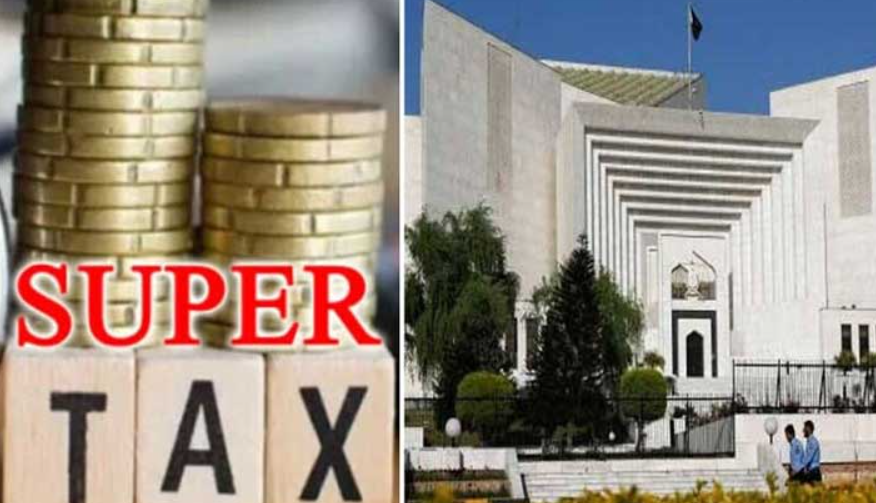Detailed Guide On India’s Most Important Tax Judgments
Picture a nation in which tax laws shift depending on who is in charge or where companies never know what they owe. Sounds chaotic, right? This is precisely the reason why our tax system relies so heavily on the Supreme Court of India. The top court of the country has over the years pronounced numerous judgments which have given shape to tax mechanism in our country.
These are the leading cases which have decided crucial issues relating to income tax, GST, Customs duties and other issues of taxation. They have sustained the rights of taxpayers, added clarity to confusing laws and assuaged public fears about being taxed fairly.
In this article we would discuss the top 10 Supreme Court cases that are actually changing tax law in India. If you’re a student or small business owner or simply someone who wants to learn how the legal system functions, this guide will help you comprehend these vital decisions in plain language.
Why Supreme Court Tax Cases Are So Important
Before we get into specific cases, let’s discuss why these decisions are so crucial. When the highest court speaks on a tax case, that is the law of the land. It must be obeyed by all lower courts, tax authorities and government departments.
These cases do several things:
Clarity: They clarify intricate tax laws that are often written in complex legal language
Protection: They shield taxpayers from unfair action by the taxman
Uniformity: They want to make sure that the tax laws are enforced uniformly and consistently throughout the country
Justice: They weigh the government’s interest in collecting taxes against citizens’ and businesses’ rights
Landmark Tax Cases That Shaped the Law
1. Vodafone International Holdings BV v Union of India
Year: 2012
What Happened: Another company with Indian assets was the target of a foreign company, Vodafone. The Indian tax authorities claimed that Vodafone owed taxes on the deal, despite it taking place outside India.
The Ruling: The Supreme Court sided with Vodafone. India cannot tax a deal which takes place between two foreign firms outside India even if the transaction indirectly involves Indian assets, the court said.
Why It Matters: This case made headlines around the world. It signaled that India would be guided by good tax principles, not taxing everything it could lay its hands on. But the government subsequently amended the law to be able to do so and then there was clamor over not respecting court orders.
Key Takeaway: This case taught us the limitations of taxing overseas transactions, clear tax laws for foreign investments.
2. Union of India vs Azadi Bachao Andolan
Year: 2003
What Happened: Certain individuals challenged the tax treaties between India and Mauritius. Foreign investors, they said, had been using these treaties to escape taxation in the country by routing money through Mauritius.
The Decision: The Supreme Court has now upheld the India-Mauritius tax pact. The court added that tax treaty obligations are to be honored regardless of the fact some people may employ them for tax planning purposes.
Why It Matters: The judgment had funneled billions of dollars in foreign investment into India from Mauritius. And it affirmed the power of investors to count on tax treaties. Subsequently, the government renegotiated this treaty to curb misuse, but the sanctity of tax treaty became sacrosanct.
Key Takeaway: International tax treaties are to be enforced and they constitute the all-important tool of attracting foreign investment into India.
For more insights on tax law and legal services, visit Zista Legalis.
3. CIT vs S. Teja Singh
Year: 1959
What Happened: Someone sold a property and used the money to buy a new house. The issue was whether he had to pay capital gains tax on the sale.
The Decision: The Supreme Court ruled that if you sell property and invest in a new residential house within a defined timeframe, you will not be liable to pay capital gains tax on the sale.
Why It Matters: This case is among the first to establish the rule of capital gains on reinvestment. It now exists as Section 54 of the Income Tax Act, and millions of Indians claim it while buying or selling homes.
Key Learning: The law enables you to save taxes by investing the proceeds from a real estate sale, promoting homeownership.
4. Commissioner of Income Tax vs Tata Iron and Steel Co. Ltd.
Year: 1998
What Happened: Tata Steel had made “voluntary payments” to retired employees out of “goodwill”. This, said the tax department, was not a business expense and could not be reported in deductions against income.
The Ruling: The Supreme Court said that payments made to keep employees from leaving or to foster good relationships with them can be considered business expenses if there is some connection to the trade or business.
Why It Matters: This case broadened the definition of a business expense. It acknowledged that companies often make payments that are not required by law but still are related to running the business. This enabled businesses to assert deductions that were legitimate.
Key Lesson: Business must expend business related expenses — not just obligatory payments, but also voluntary expenditures with business purposes are covered.
5. R.B. Jodha Mal Kuthiala vs CIT
Year: 1971
What Happened: A HUF gave gifts to its members. The tax authorities said such gifts should be included in the family’s income and taxed.
The Verdict: The Supreme Court ruled that HUF can gift to its members and these gifts are not taxable as income in the hands of HUF.
Why It Matters: The case resolved the taxability of HUFs, an esoteric concept under Indian tax laws. It had safeguarded the rights of families to hold property jointly. And to this day, most Indian family tax planning structures are based on inspiration from the above principle.
Key Learning: Hindu Undivided Families receive special tax treatment and gifts to certain members of the family are generally not taxed.
6. Dilip Kumar vs CIT
Year: 1998
What Happened: Dadasaheb Phalke Award winner Dilip Kumar received prize money from the award. This prize money was a taxable income, the tax department told them.
The Ruling: Awards from the government to honor accomplishments in arts, literature, science and social work can’t be taxed by the recipient as income.
Why It Matters: This ruling means that people who win awards from the government won’t have to pay tax on their prize money. It acknowledges that those grants are honorees’ income, not pay for work. This principle of exemption from tax of awards is well employed today.
Essential Reading: Government awards and prizes won for excellence in a specific field is tax-free.
You can learn more about India’s Income Tax Act at the Income Tax Department’s official website.

7. McDowell and Company Ltd. v CTO
Year: 1985
What Happened: A company devised a complicated structure to reduce its tax bill by moving income to somewhere with lower taxes. The arrangement faced opposition from the tax department.
The Decision: The Supreme Court ruled that U.S. taxpayers are entitled to plan their affairs so as to incur the least tax liability, provided they do so according to law. But the structure has to serve some business purpose and can’t just be an artificial construct solely designed to avoid taxes.
Why It Matters: This case created the well-known delineation between “tax planning” (legal) and “tax evasion” (illegal). It laid the groundwork for how complex tax deals are scrutinized by courts even today.
Takeaway: Tax planning is lawful and legitimate, however structures used merely to dodge taxes with no actual business purpose can be litigated.
8. Godfrey Philips India Ltd. v. State of UP
Year: 2005
What Happened: The State of Uttar Pradesh levied a tax on tobacco products. The company contended that the state could not tax these goods since they were already taxed by the central government.
The Decision: The Supreme Court held that the central and state governments can levy taxes on the same goods, provided they tax different aspects (say manufacture vs. sale).
Why It Matters: This case settled the country’s labyrinthine federal scheme of taxation. Before GST came in 2017, this premise enabled both governments to levy a tax. It told us how our tax system allocated the power between the center and states.
Key Learning: India’s federal structure permits the central as well as state government to tax same goods under separate heads of taxes.
9. Union of India and others vs Dharmendra Textile Processors
Year: 2008
What Happened: A textile company sought exemptions under customs duty rules. The government department stated that the company did not follow the specific process to claim exemption.
Decision: The Supreme Court observed that adherence to the letter of the law is required if only its substance is followed, nor mere irregularities in procedure can be ground for refusing benefits which one deserves.
Why It Matters: This was a taxpayer-friendly decision, preventing people from losing out on their benefits because of minor technical mistakes. It stressed that tax law should be concerned with substance, not form. This principle comes in handy for many thousands of companies that might commit mere light-handed procedural stumbles.
Key Takeaway: Substantive tax benefits don’t depend on complete adherence to the technical procedures enacted by Congress.
10. Commissioner of Income Tax vs Walchand & Co.
Year: 1967
What Happened: A company took out a loan to purchase equity in another firm. The business deducted from its income the interest it was paying on the loan. The deduction was disallowed by the tax department.
The Ruling: The Supreme Court decided that interest paid on money borrowed for business use is an ordinary and necessary business expense and can be subtracted from income by the borrower even if the direct income earned from making such loans was small.
Why It Matters: This decision affirmatively distinguished the interest expenses related to business activities as being deductible. Today, millions of Indian businesses implement this principle to claim deductions on the interest they pay on loans for equipment, business expansion and investment.
Key Takeaways: Business loan interest is a tax-deductible business expense.
Impact of Different Cases Comparison
| Case Name | Tax Area | Who Benefits | Current Importance |
|---|---|---|---|
| Vodafone | International Tax | Foreign Companies | High – impacts FDI |
| Azadi Bachao | Tax Treaties | Foreign Investors | Medium – treaty amended |
| S. Teja Singh | Capital Gains | Property Owners | Very High |
| Tata Steel | Business Expenses | Companies | High |
| Jodha Mal | HUF Taxation | Joint Families | High |
| Dilip Kumar | Award Income | Others | Medium |
| McDowell | Tax Avoidance | All taxpayers | Very High |
| Godfrey Philips | Federal Taxation | Companies | Medium – policy changed it |
| Dharmendra Textile | Customs/Procedures | Importers/Exporters | High |
| Walchand | Interest Deduction | Companies | Very High |
How These Cases Changed Tax Law
Each of these decisions did more than simply settle a single dispute. They invented the principles that still govern tax law in India. This is how they left their mark:
Creating Certainty for Taxpayers
Many tax issues were uncertain before those judgments. Businesses and people could not know even what rules they would be living under. These Supreme Court rulings established predictable rules that everyone could adhere to.
After the S. Teja Singh case, for instance, anyone selling property was aware that they could avoid paying taxes on it by purchasing another property within a fixed period of time. This certainty allowed millions of people to plan their finances with more confidence.
Protecting Rights Against Tax Authorities
Tax departments have enormous power. They will be able to look into your finances, request documents and levy penalties. These Supreme Court cases prevent the abuse of this power.
The Dharmendra Textile is a classic example. It also shielded taxpayers from losing benefits because of small mistakes, it said, and ensures that tax officials can concentrate on real issues rather than technicalities.
Balancing Revenue Collection and Fairness
The government uses tax money to operate the country – to create infrastructure, schools, hospitals and services. But it also must tax fairly. These cases helped us find such a balance.
The case of McDowell is a perfect example of the balance. It said tax planning is legitimate, but you can’t create phony structures simply to avoid taxes. This double constraint simultaneously safeguards the taxpayer’s right to plan and the government’s right to collect bona fide taxes.
Did You Know?
The Vodafone case was the largest tax demand in our history – over 11,000 crore rupees! The case dragged on for years and drew global attention to India’s tax regime.
Lessons for Ordinary Citizens
You may believe these big court cases affect only businesses and wealthy individuals. But really, the precedents in these cases affect ordinary people in all kinds of ways:
When You Buy a House: The S. Teja Singh case established the legal basis for capital gains exemptions that help middle-class families save taxes on selling and buying homes.
When You’re Getting a Salary: Cases on the deductibility of business expenses can help to determine what employees are entitled to claim as deductions (which means how much tax you’ll pay on your salary).
When You Start a Business: The Tata Steel and Walchand cases spelled out which expenses you could deduct, and had a direct bearing on owners of small businesses, or people who were aspiring to be entrepreneurs.
When You Receive Gifts: The Jodha Mal matter and other rulings have broadly defined the impact of gifts within families on income tax.
Recent Developments in Tax Law
These are dated landmark cases but the principles have not disappeared. However, tax laws keep evolving. These cases share a few common threads, and here are some recent developments that intersect with them:
The GST Revolution
Introduced in 2017, the Goods and Services Tax (GST) subsumed several central and state taxes. This transformed the tax landscape significantly, but the principles from cases such as Godfrey Philips relating to federal taxation are still relevant in understanding how GST operates.
International Tax Reforms
India has been re-negotiating tax treaties with several countries following the Vodafone case. The guiding principles of the Vodafone and Azadi Bachao cases still inform these discussions, although precise rules have shifted.
Digital Economy Challenges
New questions about taxation have emerged with the growth of online businesses. And over the last two years, courts have been applying principles developed in those old cases to new challenges involving e-commerce, cryptocurrency and digital services.

Frequently Asked Questions
Q1: Can the government change the law when it loses a Supreme Court case?
Yes, it is open to the government to introduce new legislation through Parliament in order to alter the legal position. This is precisely what happened post the Vodafone case – government inserted law in Income Tax Act for retrospective taxation. But efforts to make such changes are slammed by critics who try to block them in court.
Q2: How long does it normally take the Supreme Court to decide tax cases?
It can take years for tax cases to wind their way up to the Supreme Court. First, they filter down to lower courts and tribunals. It takes an average of 5 to 10 years or longer for a case to receive a final Supreme Court judgment. The Vodafone case, for instance, dragged on for years.
Q3: Do these old cases still have relevance today?
Yes! Supreme Court orders have binding force until the matter is decided by a larger bench of Supreme Court or Parliament enacts law. And principles laid down in these cases remain valid even after so many years of acceptance by the tax authorities as well as courts.
Q4: Can I use these cases to fight with taxmen?
Although these cases do set important legal precedents, you should never respond to tax inquiries without a licensed tax professional or lawyer by your side. They can clarify how these cases are relevant to your unique circumstance and properly represent you.
For expert legal guidance on tax matters, visit Zista Legalis.
Q5: Are there more landmark tax cases after these?
Absolutely! The high court maintains its reverence for tax issues. Recent major cases involved GST matters, digital taxes and international tax. Tax law develops continuously as new judgments are given.
Q6: How do I see the full judgment in these cases?
You can access Supreme Court judgments from the official website of Supreme Court of India, legal databases and third party websites. But these decisions are written in legalese and can be tough to follow without a legal education.
Q7: What if a lower court pays no attention to a Supreme Court order?
Supreme Court rulings are binding on all Indian lower courts. If ever you faced a lower court or tax bureaucracy that was ignoring Supreme Court precedent, you could take a judgment to higher courts, and they would be bound to obey the Supreme Court’s decision.





